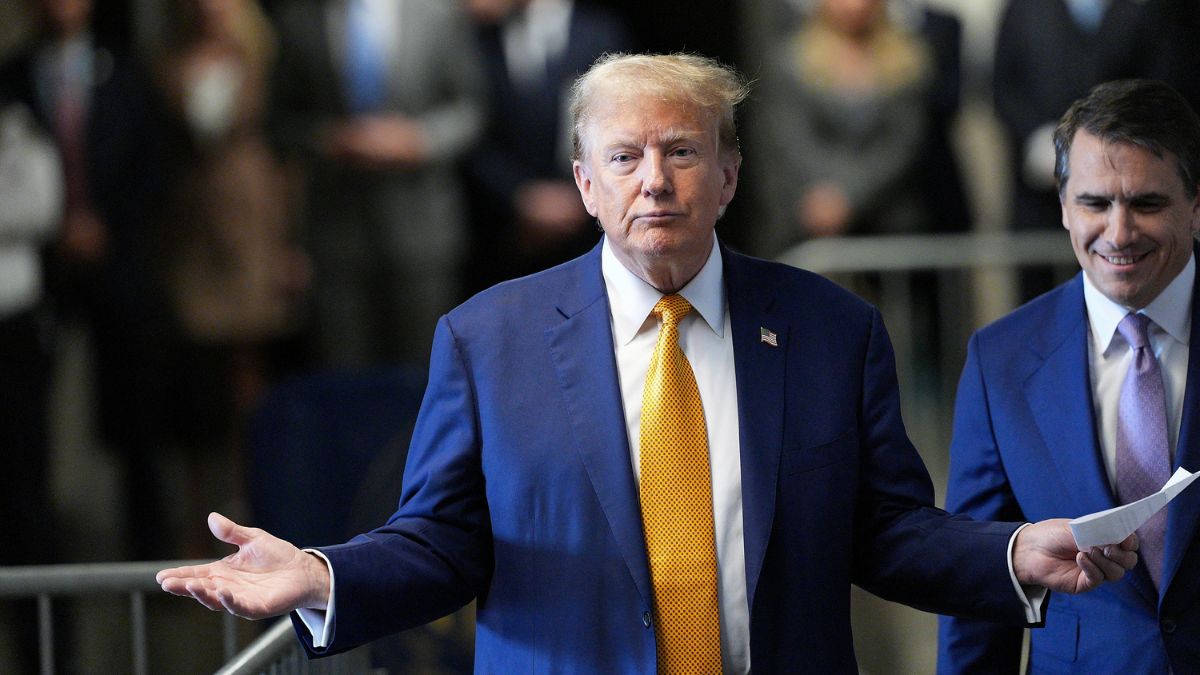In the latest case that has firmed up US President Donald Trump’s credentials as a serial lawbreaker, a federal judge on Tuesday ruled that his deployment of around 5,000 military personnel to California was unlawful.
The ruling was at least the fifth time that the courts held his executive actions as unlawful and unconstitutional. But none of these rebukes, which would have otherwise shamed an administration into changing course, has moderated Trump’s actions. Instead, he has threatened judges and continued with his agenda.
Trump’s deployment of National Guard and Marines to California violated the Posse Comitatus Act, which bars the deployment of military for law enforcement purposes domestically except in some rare cases, according to Judge Charles R Breyer of the Federal District Court in San Francisco.
Trump’s stated rationale that the National Guard and Marines were deployed to quell a rebellion and enforcement of federal law was incorrect and did not meet the threshold enshrined in laws in place since 1800s, the judge ruled.
“There were indeed protests in Los Angeles, and some individuals engaged in violence. Yet there was no rebellion, nor was civilian law enforcement unable to respond to the protests and enforce the law,” the judge ruled.
In previous instances, judges have held as unlawful and unconstitutional Trump’s actions related to birthright citizenship, tariffs, mass-firing of government employees, and crackdown on diversity, equity, and inclusion (DEI) policies.
Trump’s excesses and court’s rulings
In his second term, Trump has vastly expanded executive power and disregarded due process for everything from deporting immigrants to imposing tariffs. Even as courts have ruled against him in multiple cases, these rulings have not deterred Trump.
In any case, the Supreme Court with its 6-3 conservative majority —three of six judges being his appointees— is in Trump’s pocket, so he is assured that all cases, whenever they would eventually land at the Supreme Court, would end in his favour.
Here are other actions with which Trump broke the law.
1. Birthright citizenship
In one of his first executive actions, Trump announced the end of birthright citizenship for children born to undocumented immigrants and temporary residents inside the United States. But multiple courts held the decision as unconstitutional.
The 14th Amendment of the US Constitution states that “all persons born or naturalised in the United States, and subject to the jurisdiction thereof, are citizens of the United States and of the State wherein they reside”. The key determiner here is the “subject to the jurisdiction thereof”. The courts have for more than a century held that even undocumented immigrants inside the United States are subjected to US jurisdiction and hence the clause extends to their children.
In the United States v. Wong Kim Ark (1898), the Supreme Court ruled that this extended citizenship to everyone born in the United States irrespective of the immigration status of their parents as long as they were not foreign diplomats or enemy occupiers.
However, this did not prevent from Trump from banning birthright citizenship for children born to undocumented immigrants and temporary residents in an blatant act of executive power overriding the Constitution.
The New Hampshire Federal Court blocked the executive order and ruling it as “blatantly unconstitutional”. The 9th Circuit Court of Appeals ruled that the executive order was “contrary to the express language of the Citizenship Clause” and “contrary to justice”. It further said that the administration’s rationale was “contrary to Executive Branch practice for the past 125 years”.
2. DEI
After Trump ended DEI policies with executive orders, the Maryland Federal District Court and California Federal District Court partially blocked these orders on grounds that they violated fundamental rights of people and organisations, particularly the queer community.
3. Mass firing
In a bid to reduce government expenditure and purportedly make the government efficient, Trump through the Department of Government Efficiency (Doge) fired thousands of government employees — sometimes firing entire teams and departments and shutting down entire government programmes.
The District Court for the Northern District of California ruled that these firings were illegal and called the process behind them a “sham”. The court ordered the immediate reinstatement of thousands of employees in six federal government departments.
Separately, the Maryland Federal District Court ruled that the administration failed to follow the due process in firings at 18 federal agencies.
4. Tariffs
In arguably the most damning ruling, the US Court of Appeals for the Federal Circuit late last month ruled that Trump’s use of the International Emergency Economic Powers Act (IEEPA) to impose a slew of tariffs was illegal.
Trump has used the IEEPA to impose tariffs on China, Canada, and Mexico. He also used the law to use the law to impose so-called reciprocal tariffs on more than 60 countries and blocs.
The court ruled that setting tariffs is a “core Congressional power”.
“It seems unlikely that Congress intended, in enacting IEEPA, to depart from its past practice and grant the President unlimited authority to impose tariffs,” the court ruled.
End of Article

)

